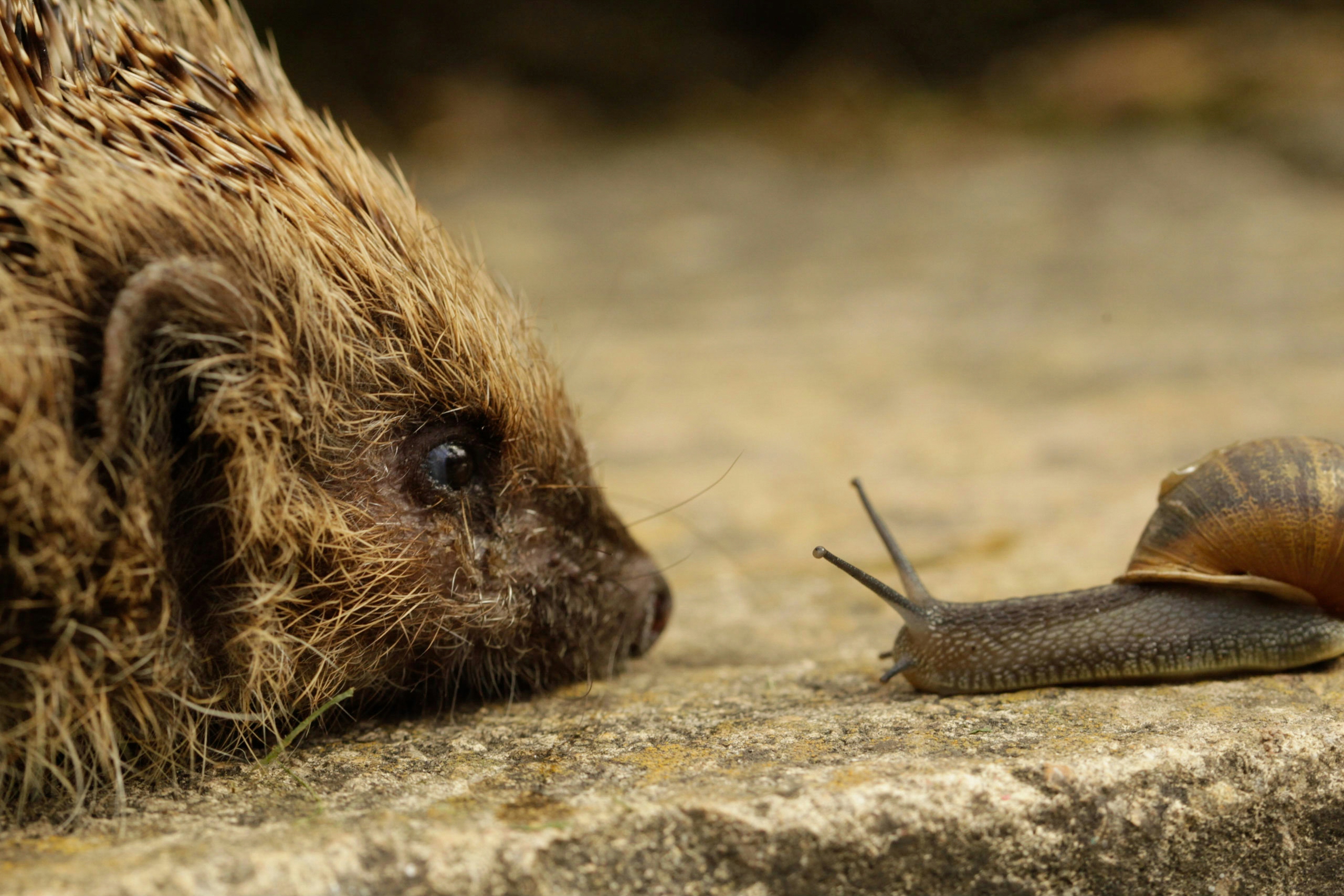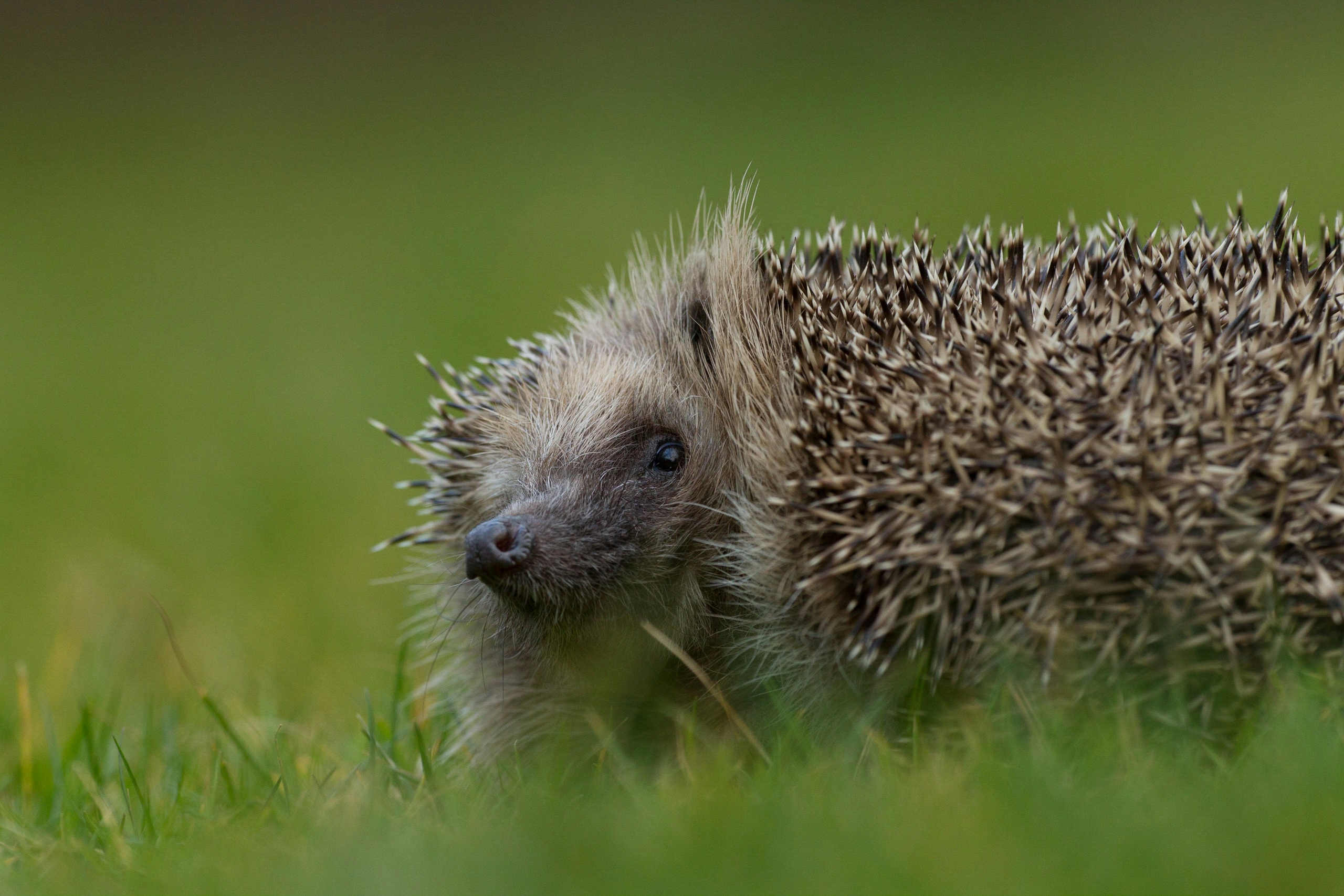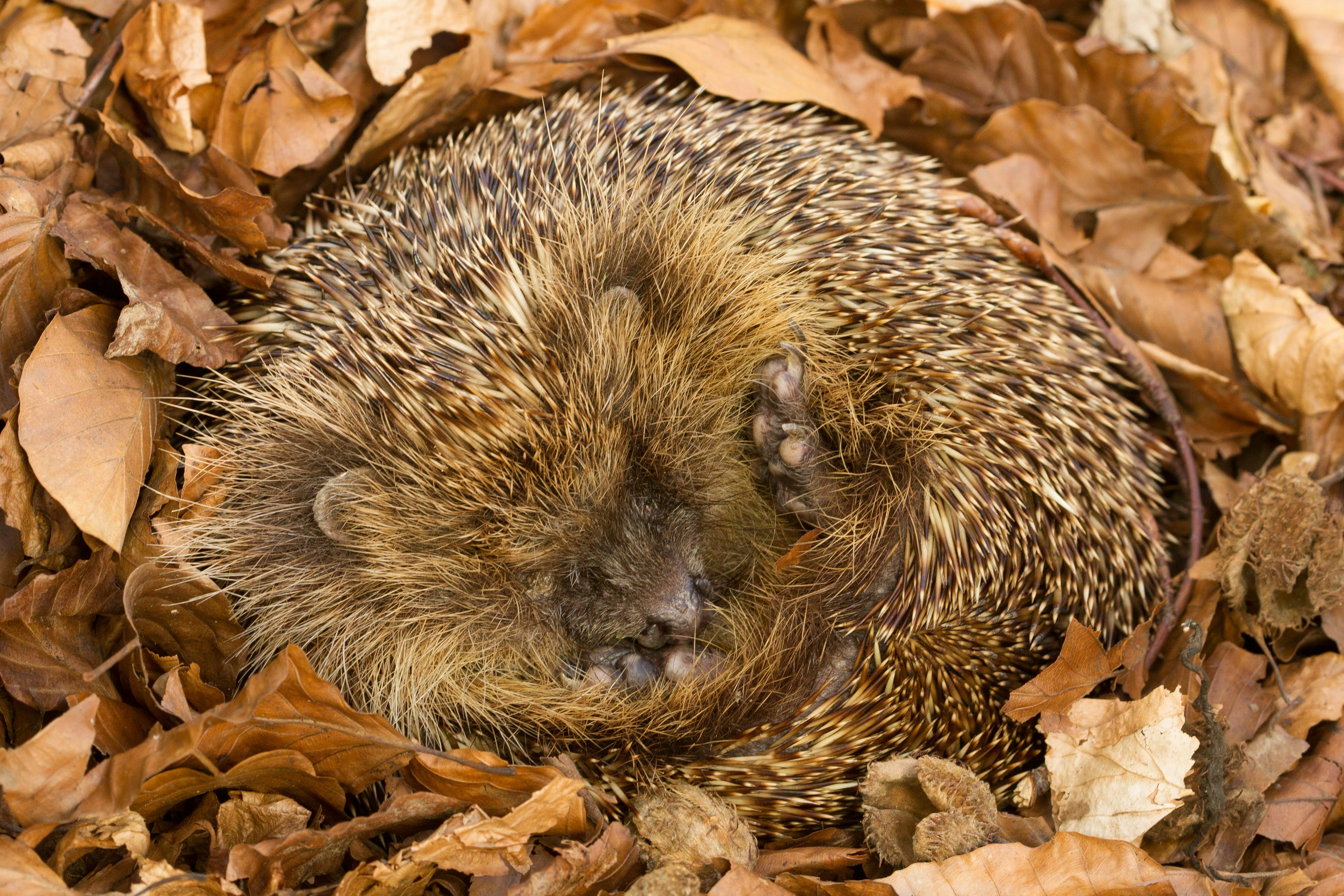10 WAYS YOU CAN HELP HEDGEHOGS

A hedgehog and a snail, by Nick Martin
Hedgehogs are suffering massive decline – here’s what you can do to help.
1. GIVE THEM WATER
Making a wildlife pond is the best way to look after the wildlife in your garden. Make sure it’s got a ramp for hedgies to use to get out of the pond as they like going for a swim!
If you don’t have a pond, leave shallow dishes of water out all year round for hedgehogs.
2. FEED THEM
Feeding hedgehogs is cheap and easy – I’ve written about what to feed them and how to build a feeding station.
3. CREATE A HEDGEHOG HIGHWAY
Hedgehogs can cover 4 km a night, and walls and fences make it difficult for them to travel to find food, water, shelter and a mate. Hedgehog highways are holes or tunnels created to allow hedgehogs to move more freely.
Creating a hedgehog highway in your fence is a great way to encourage hedgehogs to your garden. It’s a good idea to discuss this with your neighbour first – not just in case they own the fence, but also to get them on board with keeping their side of the highway clear.
To make a hedgehog highway, cut a hole that is 13 cm by 13 cm. File the edges of the hole to ensure there are no sharp points that could injure the hedgehog. It’s best to have a hole on more than one side of your garden.
If your fences have concrete baseboards, you could create a ramp to the hole using earth or a piece of wood.
There’s a great campaign called Hedgehog Street that aims to get whole streets involved in creating hedgehog highways – you can sign up to be a Hedgehog Champion.
In case you move house or get new neighbours, it’s useful to add a hedgehog highway sign above the hole when you create it – you can buy a pack of two or make your own!

Hedgehog, by Nick Martin
4. AVOID USING PESTICIDES
I won’t delve into complicated scientific research on pesticides here. We know that poisons declared as ‘safe’ might not be from experience – poisons like DDT and methiocarb were thought to be ‘safe’ and were flung around with abandon but have now been banned as a result of their widespread harmful effects on wildlife.
Pat Morris sums up the common-sense approach: “the basic message…is that poisons kill things: that’s what they are for.”
Slug pellets, herbicides, insecticides and rodenticides are all harmful to hedgehogs and other wildlife in your garden. Aside from the studies regarding the harmful unintended impact of the chemicals they contain, at a base level using these poisons reduces the number of natural prey items for hedgehogs in your garden.
Give your garden wildlife a break and lay off the eco-system-disrupting chemicals.
5. PICK UP NETS
Hedgehogs can become tangled in tennis or badminton nets and the nets used to grow fruit and vegetables, resulting in injury or death. Don’t leave any nets on the ground.
6. BE CAREFUL WHEN YOU THROW AWAY RUBBISH
On a morning that I watched a hedgehog move resting places in my garden, the place it chose to go for the rest of the day was a bag of brambles and sticks (split on the underside) that was waiting to go into the brown bin.
Had I just picked that bag up and chucked it into the bin I might well have unknowingly thrown a hedgehog away with it – so if you leave any bags or buckets of garden waste or similar in your garden (even just overnight), empty and check them carefully before throwing their contents away.
7. CHECK FIRE PITS
Be extremely careful before lighting bonfires or fire pits.
Check the material you’re about to burn closely for hedgehogs before starting the fire, especially if you’re starting a fire after late October, as your pile may have a hibernating hedgehog in, and hedgehogs in hibernation can’t move quickly.
Deconstruct your pile and re-make it before you light it, to ensure that there are no hedgehogs resting within.

A hedgehog sleeping, by Nick Martin
8. WATCH WHERE YOU’RE STRIMMING
A common cause of injuries to hedgehogs is from garden equipment. If you are strimming areas of long grass, plants, or the bottom of hedges, take the time to check very carefully for hedgehogs and other animals.
If you can’t easily see the ground, take the time to carefully walk through all the areas of grass you are planning to mow or strim, looking for hedgehogs that may be nesting or resting in tussocks, under brambles, or in piles of leaves.
9. ENCOURAGE THEIR NATURAL PREY
Hedgehogs predominantly eat beetles, but caterpillars also make up a large proportion of their diet. Other natural food sources include earthworms, birds’ eggs, slugs (and occasionally snails), millipedes, earwigs, bees, cranefly larvae, small birds and small mammals (often as carrion).
Garden in a way that is insect-friendly and you’ll benefit all of the wildlife further up the food chain. Stay organic, create log piles, leave areas of longer grass, plant pollinator and butterfly-friendly plants, and ease off on the over-tidying.
10. INSTALL A HEDGEHOG HOME
To provide them with some luxury accommodation, you can buy or build a hedgehog home.
Try to provide them with natural nesting opportunities too. Most hedgehog nests are constructed from broad leaves or grass underneath brambles or thorny bushes like holly. Leaving fallen leaves and avoiding disturbance to areas that hedgehogs might nest can help them to raise their families or hibernate in peace.
Have you helped hedgehogs? Do you have any more tips, or cute hedgehog photos? Let me know on socials! Links below.
RESOURCES
The images used in this post were taken by Nick Martin of All Things Wildlife, a fantastic site dedicated to furthering Nick's mission of enthusing as many people as he can about wildlife and the great outdoors. Check out their Instagram and Twitter, too!
The information about what hedgehogs eat in this post is taken from page 55 of Hedgehogs by Pat Morris, part of the the British Natural History Collection.
The RHS has a delightful book by Helen Bostock called How Can I Help Hedgehogs?
Share with your friends
Subscribe to learn more
Join me in exploring our natural world and cultural heritage as we learn how to protect and restore it. Get notified on my latest posts and a monthly newsletter on wider conversation topics for us to chat about.
Recent Posts
If you enjoyed this one, then you might like these too.